Examination of Another PG&E Ignited Wildfire: The 1,505 square mile (963,309 acre) Dixie Fire

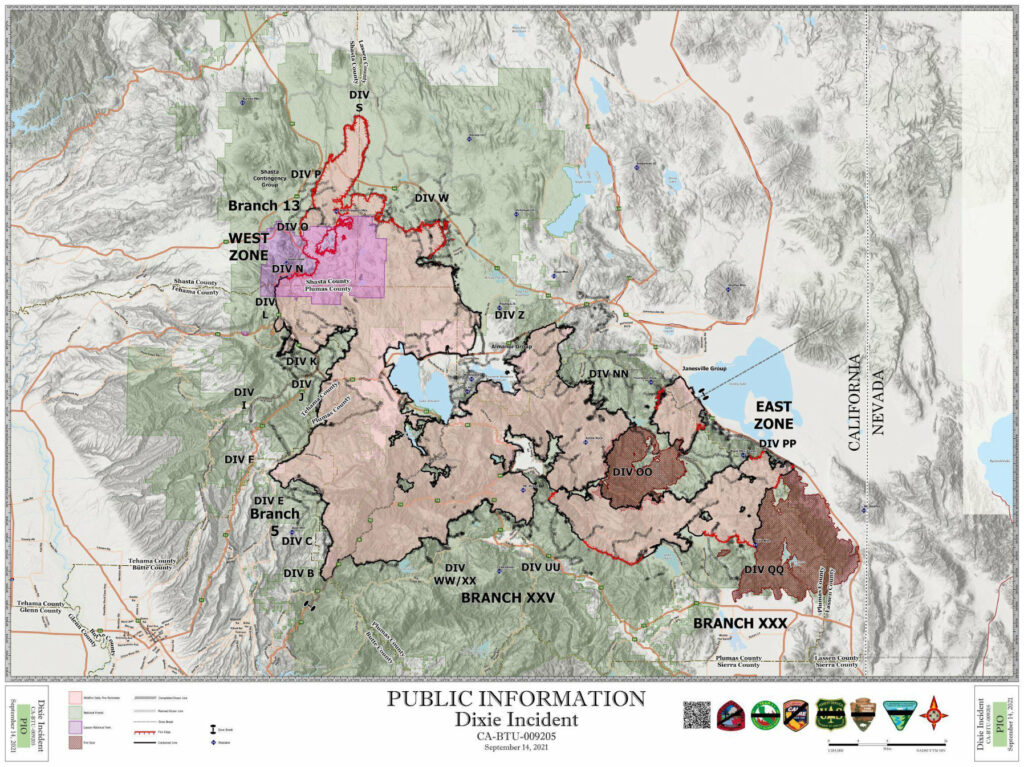
CalFire wildfire investigators announced on January 4, 2022 that the Dixie Fire was ignited by PG&E equipment in contact with a tree. CalFire sent their report to the Butte County District Attorney. We have a Public Records Act request filed with this District Attorney’s office asking for a copy of that report, but do not expect to receive it any time soon.
This huge fire was ignited on July 13th, 2021 by an electrical fault on a PG&E distribution circuit that supplied their Cresta Dam powerhouse on the North Fork Feather River along State Highway 70 in Plumas County. The fire was declared contained on October 24, 2021. This fire crossed the Sierra Nevada divide burning almost to the border with Nevada. Several communities were damaged or destroyed including Greenville, Canyon Dam and Indian Falls. Media reports indicate more than half of Lassen Volcanic National Park burned in this fire. Park officials state that 73,240 acres of the park were burned at various levels of severity. The Dixie Fire was by far the largest fire in the 105 year history of the park.
A CA Public Utilities Commission report and CalFire both stated that PG&E became aware of a power failure around 7 AM on July 13th, when the electrical supply failed at their Cresta Dam hydropower station. This hydropower-dam site receives its operating electricity from the PG&E Bucks Creek power circuit. The Fly Fire that began on July 22 and later merged with the Dixie Fire was also the subject of a PG&E report to the CPUC indicating that this fire may also have been ignited by a power circuit.
What follows is our supposition for the events that started the Dixie Fire. We do not presume to have complete information. CalFire has not released their report to the public. The following speculative conclusions are based upon CalFire and CPUC reports sourced from PG&E to these two agencies, and also from witness statements taken by Federal Judge William Alsup.
Photos displayed by ABC10 Sacramento in their “Fire – Power – Money” series, showed that a fir tree with a damaged core leaned into contact with at least one of the three uninsulated small cables in this circuit. None of these cables broke. If these cables had been fully insulated there would probably have been no Dixie Fire as long as this problem had been discovered soon. The process of fire ignition began as electricity flowed down the tree to earth creating a phase to earth electrical fault.
Our speculation for the direct cause of this fire ignition, is that over a period of hours the electrical fault current intensified as the wood of the tree became charred and carbonized by the flow of 12,000 volt electricity. Carbon is a conductor of electricity. Heat from a powerful electrical fault will burn wood and convert it into charred material over time, thus making this material more conductive of electricity. This process intensified the power of electrical conduction to earth.
This electrical conduction from the bare power line down the tree trunk to earth appears to have been the source of ignition for this wildfire. These speculations are derived from our review of statements submitted to Federal Judge William Alsup as he investigated PG&E’s role in the start of the Dixie Fire. Alsup is responsible for the PG&E Probation imposed upon the company after multiple convictions in the Federal case arising from the 2010 gas transmission line explosion disaster in San Bruno CA that killed 8 people.
Below are photos from near the site of the reported circuit failure and wildfire ignition. This area is upslope from the PG&E power station on the Feather River.

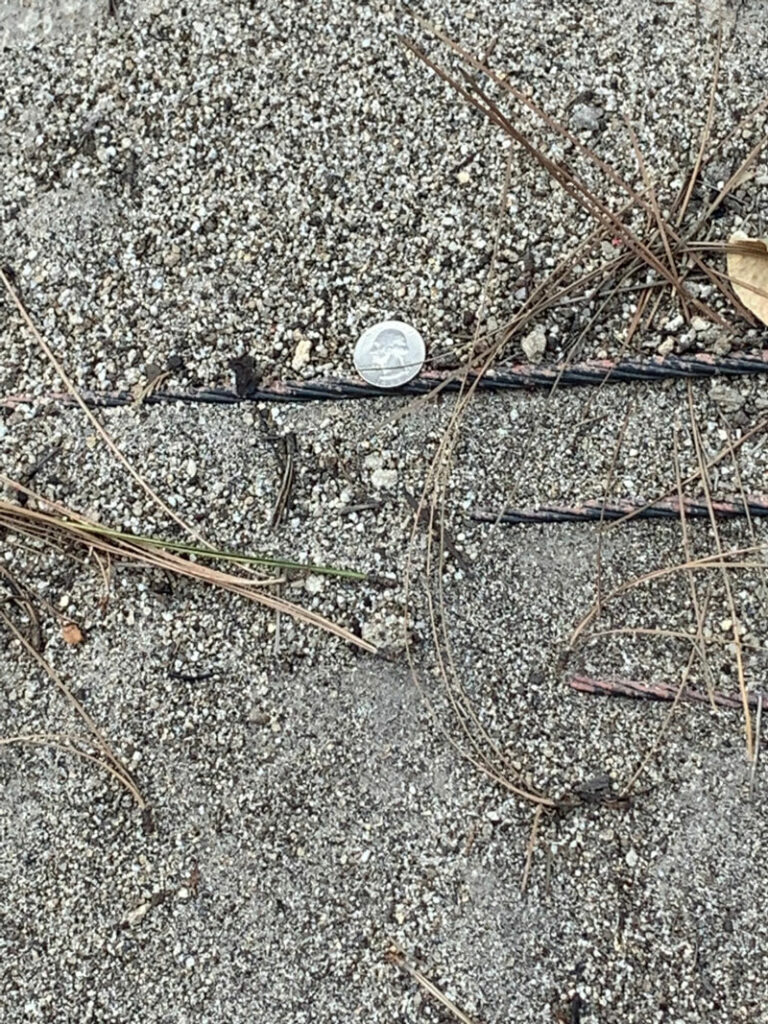
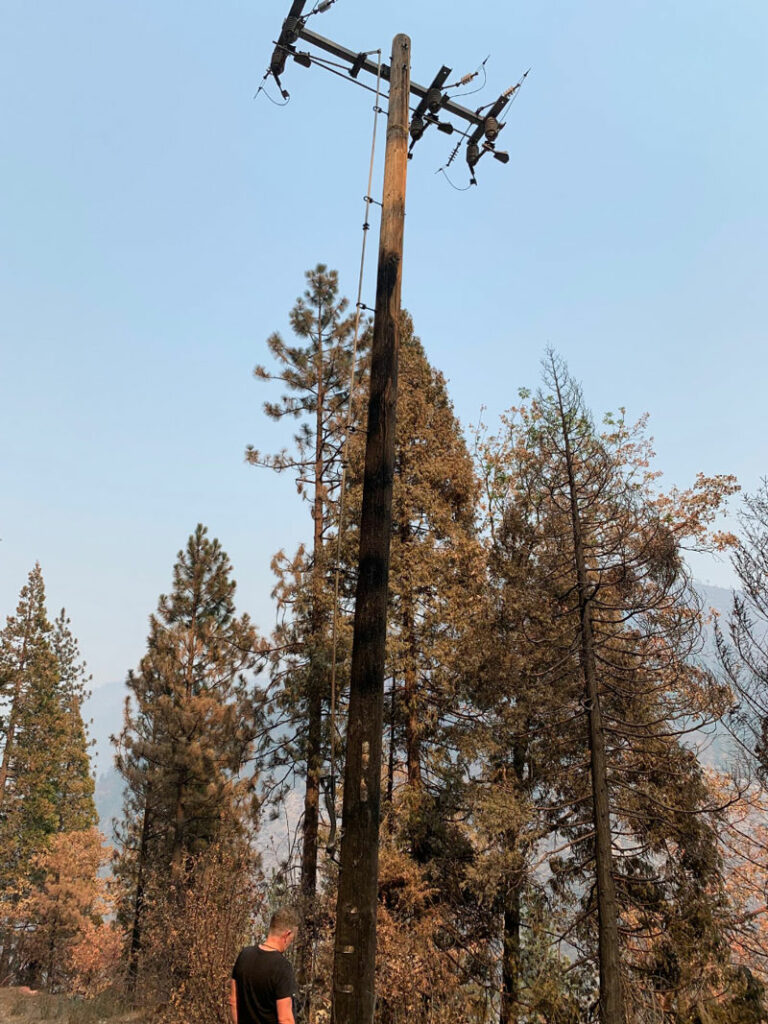
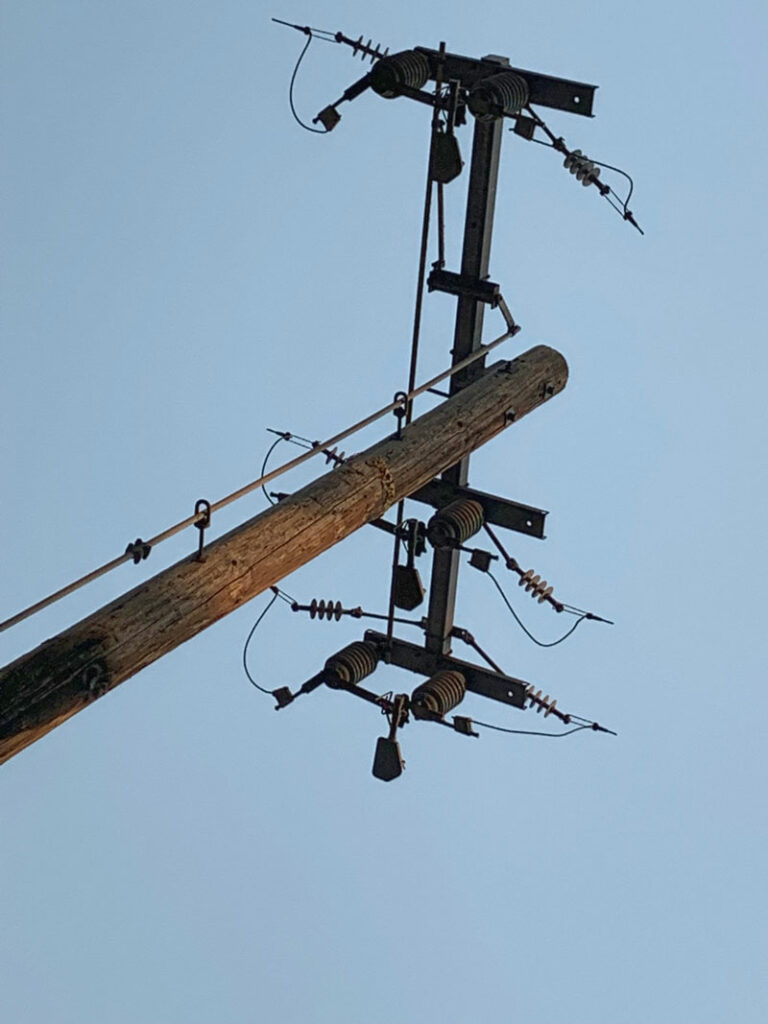
Burned power pole with 3 phase manual switch, and closeup of switch. Cables are removed, perhaps for the CalFire investigation.

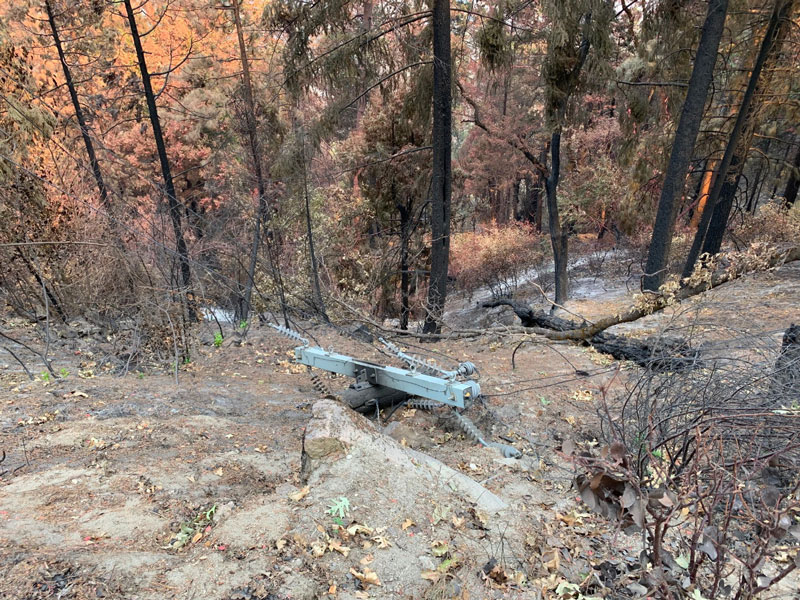
These forests are severely impacted by global warming driven drought. We think it will now be impossible to use uninsulated equipment in these environments without a very high risk of power utility ignited fires.
Southern CA Edison is replacing extensive circuit miles of uninsulated conductor cables with fully insulated cable. If you have been misled by the notion that it’s not possible to insulate high voltage cables, then look at these next pictures. One is of multi-conductor high capacity cable and the other photo is spacer cable. Hendrix Cable is a prominent manufacturer of fully insulated and very strong spacer cable systems.
Spacer cable systems are very strong and safe. In the eastern US several municipal utilities are installing spacer cable because it is virtually immune to ice storms that add heavy ice weight onto power cables.

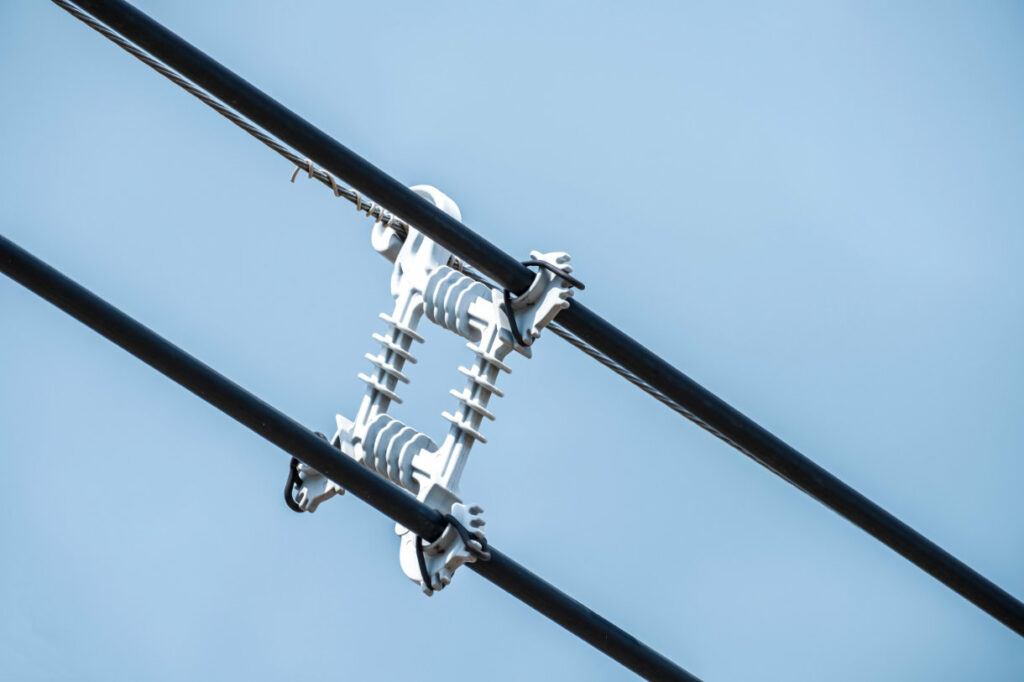
The photo on the left is engineered cable. It appears to be designed for under-grounding. It’s shown here to demonstrate how far cable and materials engineering has come, in terms of circuit safety.
Further explanation for what we know so far about the start of the Dixie Fire, and why this fire should have been prevented.
PG&E owns five hydropower stations on the North Fork Feather including multiple pen stocks all producing over one billion watt hours of electric power per year.
The incident report states that a PG&E troubleman observed an open fuse. We will discuss safe fuses in another part of this website. For reasons not yet clear, but related to road closures, the troubleman did not reach the power pole with the hanging tripped fuse until about 4:40 PM, many hours after the power outage. The power outage at the dam site led to the troubleman’s search for the problem in the circuit. At the presumed general site of the fire ignition he saw two blown fuses on a power pole and he manually opened the third fuse cutout. He reported a fire on the ground at this time by radio, satellite phone or by some other method. At 8:45 PM July 13, CalFire report stated that the fire was at one to two acres in size and that ground crews had difficulty reaching the site.
The CEO of PG&E, Patricia Poppe, stated during a press conference addressing the Dixie Fire, that PG&E had inspected the circuit near this ignition site in 2019 and 2020. So apparently no tree interference problems were found during these inspections, or if vegetation interference was found, we assume that it was addressed.
This is an example of the fact that except for obviously dead or badly damaged trees, no one can tell which tree might make contact with an electrical circuit in the future. Nevertheless PG&E continues with its expanding tree removals at huge expense. The company has a notion of “strike distance” that identifies any tree tall enough to possibly fall into its lines, one day.
The following is merely informed speculation. Also we have no evidence that this electrical circuit violated any CPUC standards for circuit safety or construction. However we regard the CA Public Utilities Commission’s circuit safety regulations to be severely deficient.
One fuse was seen tripped from a distance. But the troubleman reported that 2 of the 3 line fuses were blown when he reached the site of the fire. At least two interwoven scenarios are possible. One is based upon photographs showing that the tree in contact with one conductor was burned at its base and charred at the likely contact point with the bare powerline. This leads us to the conclusion that the tree conducted electricity to earth. This may sound impossible, but at 12,000 volts electricity will travel over the surface of non-conductive materials. As time passed the wood charred, was carbonized, and the fault current strengthened until the base of the tree began burning. Eventually the power conduction, and possibly contact with a second power line, produced sufficient current to trip (blow) another fuse. By this time a fire was likely to have already ignited. The troubleman reported that two line fuses (phases) had tripped. Therefore it’s also possible that as the faulted powerline heated up, it stretched, and the tree, or the first powerline, made contact with a second power line, and that this tripped the second fuse. Sparks would have showered the ground if 2 bare energized conductors had made direct contact.
These details are not that important, because our supposition for the underlying source of this fire was the uninsulated cable suspended though a dried out forest, and also because this circuit proved to be insufficiently protected. Utility power circuits hold immense potential energy. We tend to forget this because most of the time these wires suspend above us quietly. However the capacity for a disaster is always present.
Modern circuit protection uses computers to recognize electrical faults and shut down circuits before they cause problems. These computer sensors can be mounted on power poles exactly for this purpose. This equipment has been available for years. The CA Public Utilities Commission and their former Wildfire Safety Division have called this equipment “pre-commercial”. It’s is not. You can buy it here.
It’s most likely this wildfire began on the ground in leaf litter, dried out shrubs and grasses adjacent to the base of the tree in contact with bare power lines. Once we have access to the official CalFire causal report, we will make it available from this website.
All Wildfires Start Small
In our speculative scenario, the Dixie Fire took a day to become a wildfire. A rapid and effective firefighting response could have prevented this disaster. CalFire should possess the capability to put these fires out quickly, especially during droughts. However there are many fire ignitions for this agency to deal with, and they need far more capacity. By the night of July 13 they were unable to extinguish this fire.
We need a new vision for effective firefighting in California. Global Warming has changed everything about wildfires. You may be hearing a lot about wildfires. Some of this buzz is timber industry public relations. Some is independent science. Often we’re hearing someone’s opinion, informed or not. What is inescapable, is that climate change is leading to many more forest fires across the entire planet, from Australia to Greece to Alaska.
PG&E should react to every power outage in rural land as a potential wildfire. The company reports over 40 power outages a day. Many of these outages could involve potential fire ignitions.
The entire Intermountain Western US could be ashes in the next 20 years if we do not learn from these terrible events. Most wildfires have human causes. But in 2020 huge California fires were started by an unprecedented lightning storm. It’s been widely reported in the press that one in eight acres of CA have burned in the last 10 years, according to a researcher with San Jose State University. Eight of the largest wildfires in California history have burned in the past five years.
